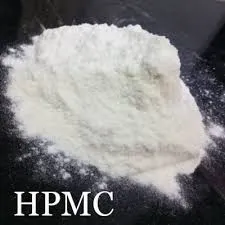
Nov . 20, 2024 18:04 Back to list
hydroxyethyl cellulose powder
Hydroxyethyl Cellulose Powder Versatile Applications and Benefits
Hydroxyethyl cellulose (HEC) is a water-soluble polymer derived from cellulose, which is a natural polymer obtained from the cell walls of plants. Its unique properties make it a valuable ingredient in various industries, including pharmaceuticals, cosmetics, food, and construction. HEC is notably used as a thickening agent, stabilizer, and film-forming agent, showcasing its versatility and effectiveness in enhancing product formulations.
Chemical Structure and Properties
HEC is synthesized through the etherification of cellulose, where ethylene oxide is reacted with cellulose to produce hydroxyethyl cellulose. This modification imparts solubility in water, allowing HEC to dissolve easily and form viscous solutions. The molecular weight of HEC can vary significantly, affecting its thickening and binding properties. Typically, HEC has a wide range of viscosity levels, which can be tailored to meet specific application requirements. The polymer is also non-ionic, meaning that it does not carry a charge, making it compatible with various surfactants and electrolytes.
Applications in Pharmaceuticals
In the pharmaceutical industry, hydroxyethyl cellulose powder is utilized as a binder, thickener, and controlled-release agent in formulations such as tablets, gels, and ointments. HEC enhances the viscosity of gels and creams, improving their texture and application. Its ability to provide controlled release of active ingredients is particularly beneficial in drug formulations, ensuring that medications are released at a consistent rate over time. Moreover, HEC is often used in ocular preparations due to its compatibility with mucosal tissues and ability to retain moisture.
Role in Cosmetics and Personal Care
HEC's thickening properties make it a popular ingredient in cosmetic products, including lotions, shampoos, and conditioners. It helps to modify the viscosity of formulations, giving them a pleasing texture while enhancing the stability of emulsions. HEC also functions as a film-forming agent, providing a protective layer on the skin, which can help retain moisture and improve the overall feel of cosmetic products. Additionally, its non-irritating nature makes it suitable for sensitive skin formulations.
hydroxyethyl cellulose powder

Food Industry Usage
In the food industry, hydroxyethyl cellulose serves as a thickening and stabilizing agent in various products, such as sauces, dressings, and ice creams. Its ability to retain water and maintain texture enhances the mouthfeel and consistency of food products, improving consumer satisfaction. HEC also acts as a fat replacer, contributing to lower-calorie food formulations without sacrificing quality or taste. As a non-toxic and approved additive, HEC aligns well with modern dietary preferences, emphasizing health and wellness.
Construction and Building Materials
HEC is also widely used in the construction industry, particularly in cement-based products, adhesives, and paints. It improves the workability and application of such materials by enhancing their viscosity and preventing sagging. HEC ensures uniform dispersion of components, improving the stability and shelf life of construction products. Its water-retaining properties are critical in minimizing shrinkage during the curing process of cement mixtures, thus contributing to stronger and more durable structures.
Sustainable Aspects and Future Trends
As the demand for sustainable and eco-friendly products continues to rise, HEC stands out as a biodegradable and renewable polymer derived from natural cellulose. Its versatile applications across multiple industries make it an essential ingredient in developing innovative solutions that align with sustainability goals. Researchers are exploring new modification techniques to enhance the properties of HEC, making it even more effective for emerging applications.
Conclusion
Hydroxyethyl cellulose powder is a remarkable polymer with diverse applications across various industries, including pharmaceuticals, cosmetics, food, and construction. Its impressive thickening, stabilizing, and moisture-retaining properties make it an invaluable ingredient in numerous formulations, enhancing performance and user experience. As industries increasingly focus on sustainability, HEC's natural origins position it favorably for future developments, ensuring its relevance in a rapidly evolving market. Whether in a jar of cream or a bag of cement, hydroxyethyl cellulose continues to play a pivotal role in modern formulations, showcasing the intersection of nature and innovation.
-
Versatile Hpmc Uses in Different Industries
NewsJun.19,2025
-
Redispersible Powder's Role in Enhancing Durability of Construction Products
NewsJun.19,2025
-
Hydroxyethyl Cellulose Applications Driving Green Industrial Processes
NewsJun.19,2025
-
Exploring Different Redispersible Polymer Powder
NewsJun.19,2025
-
Choosing the Right Mortar Bonding Agent
NewsJun.19,2025
-
Applications and Significance of China Hpmc in Modern Industries
NewsJun.19,2025







